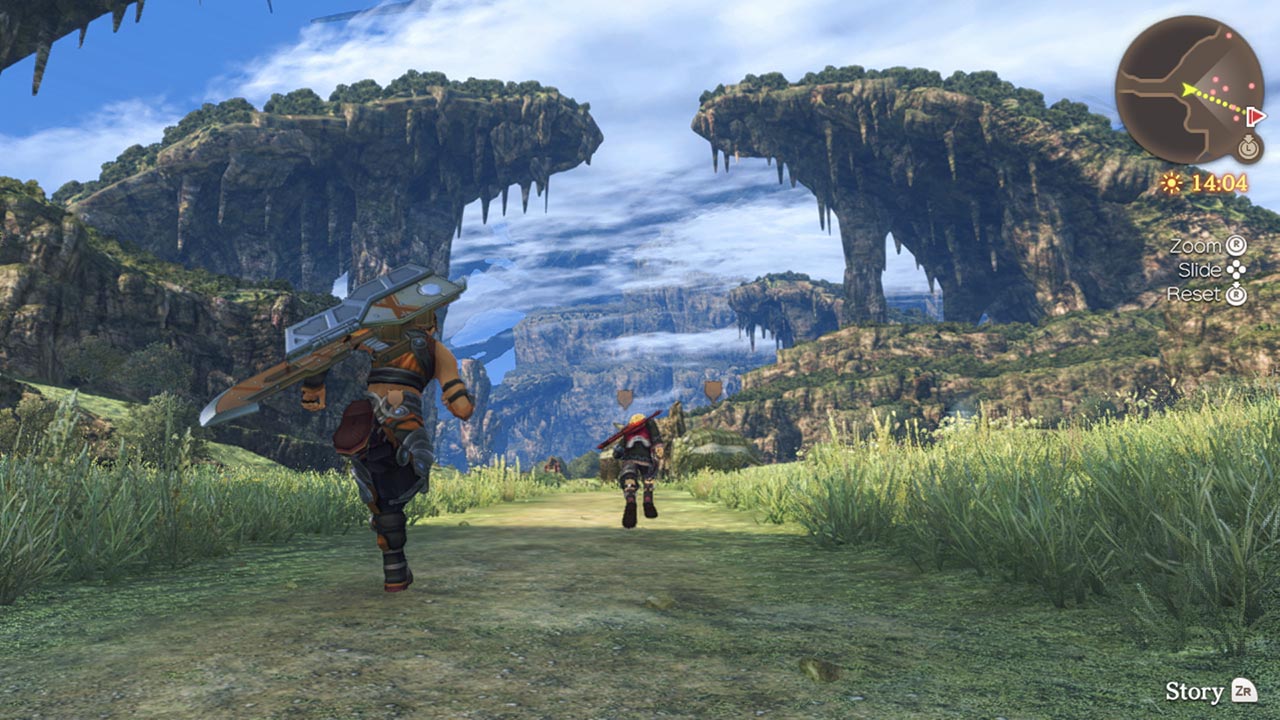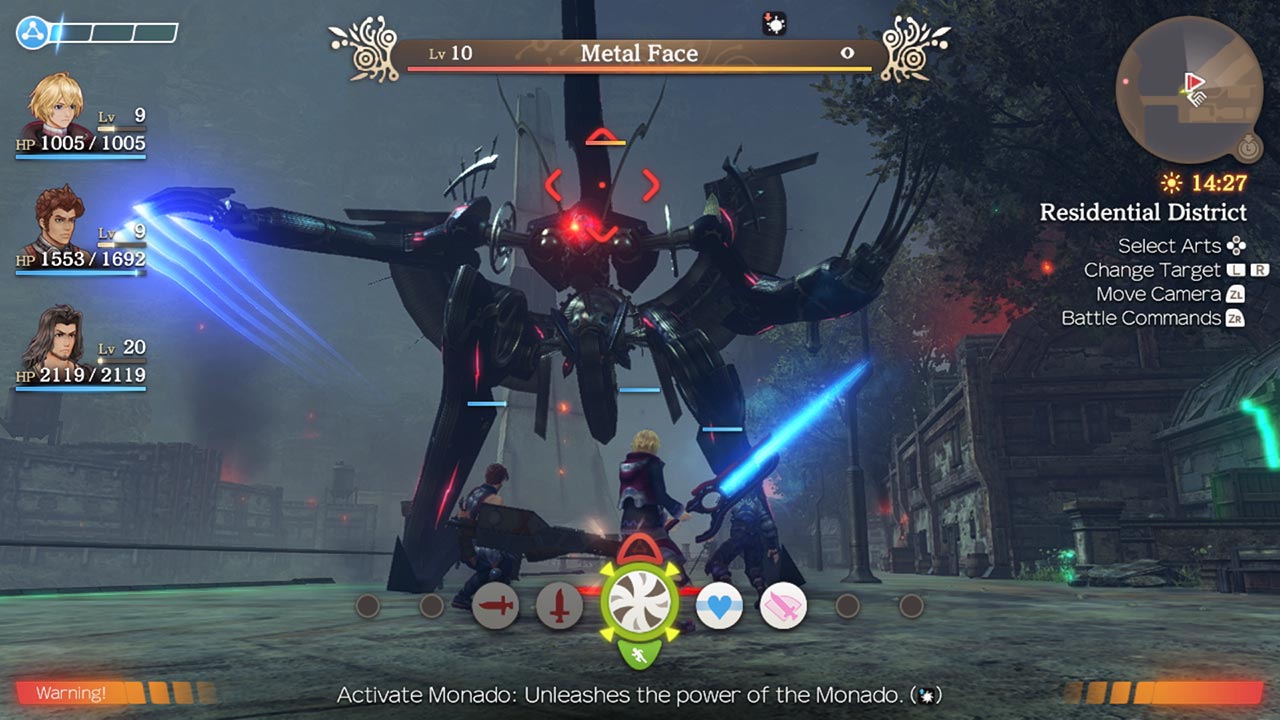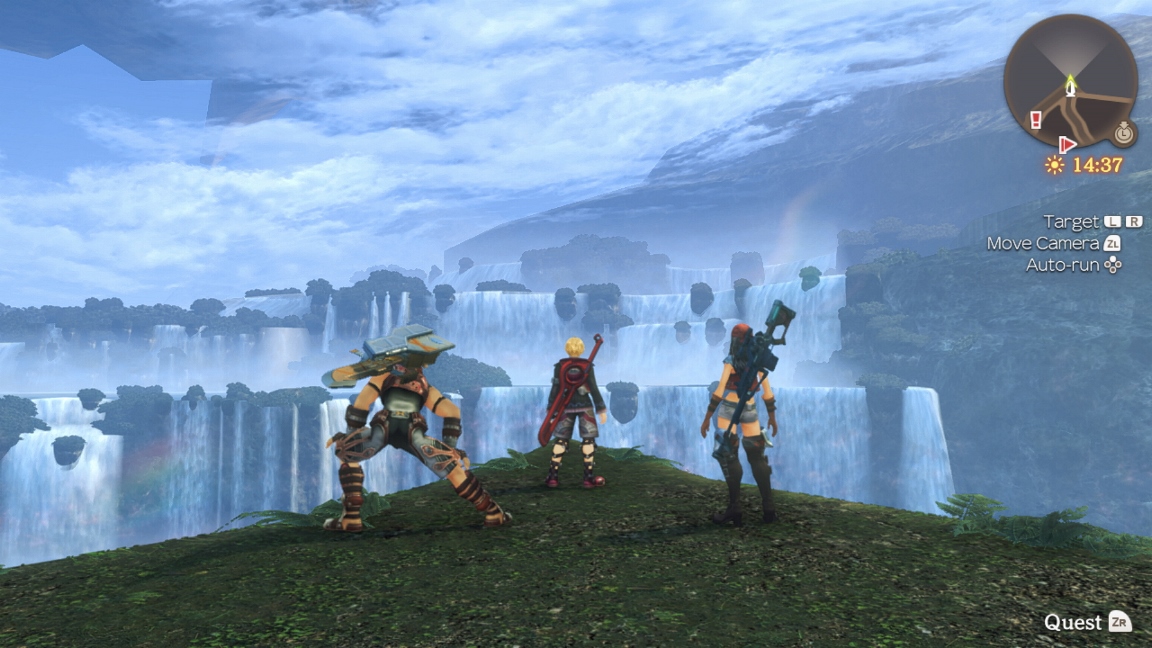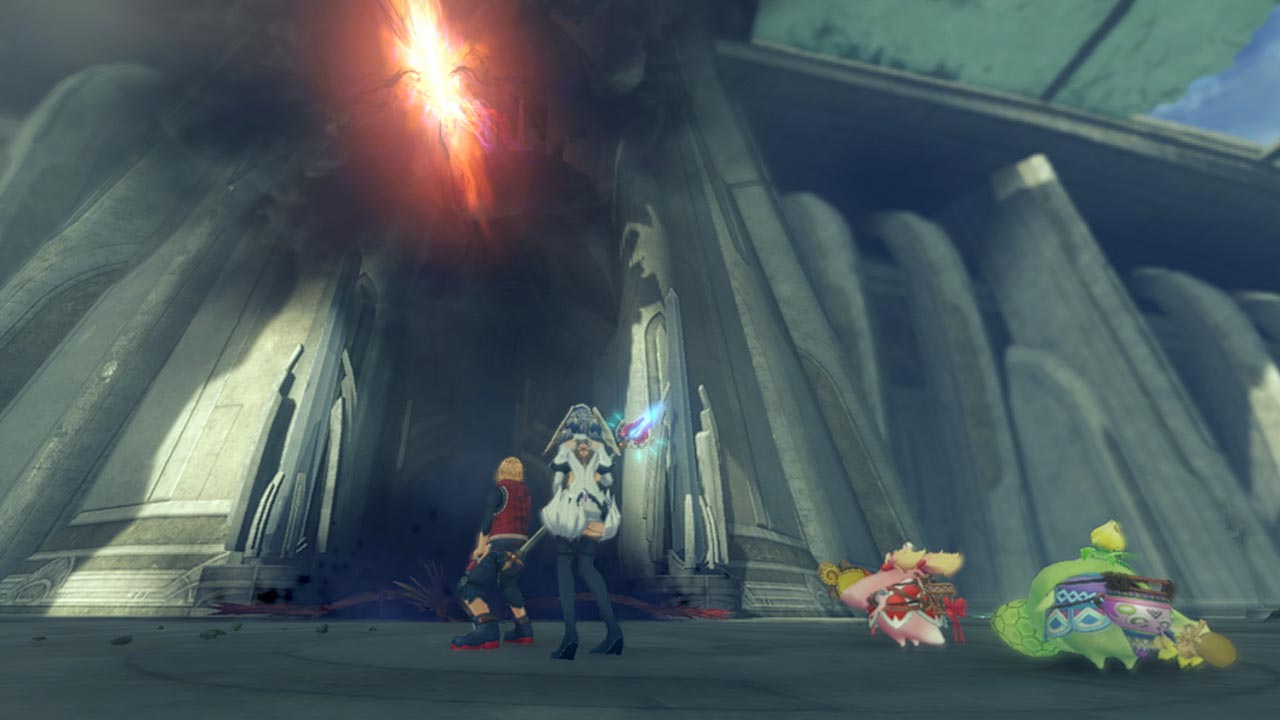[Review] Xenoblade Chronicles: Definitive Edition
System: Switch
Release date: May 29, 2020
Developer: Monolith Soft
Publisher: Nintendo
It’s about time Xenoblade Chronicles got its definitive edition. Its original release at the tail end of the Wii’s life, exacerbated by the game’s staggered international releases, was far from ideal. Even if you got the chance to play the original, one couldn’t help but feel that Monolith Soft was pushing the Wii beyond what it should reasonably be doing. It was an open world JRPG that was a generation ahead of its time on hardware that was a generation behind the times. If you’re anything like me, you revel in watching developers push the technical boundaries of outdated hardware – but I could hardly blame anyone who struggled to embrace Xenoblade’s obvious visual compromises. Years later, the game was ported to New 3DS. Needless to say, while that version is its own kind of low-tech marvel, an even lower resolution screen with even further cut back visuals was far from the ideal way to experience the grand scope of Xenoblade’s world, where life flourishes on the standing corpses of two gods, with people and animal life existing on an almost unimaginably small bacterial scale. Finally, on a system at the height of its life, with revamped graphics – albeit visuals that are still a little soupy as has been characteristic of Monolith Soft’s Switch engine – Xenoblade is poised for success beyond its niche and scattered Wii evangelists.
Monolith Soft’s Xeno series has always been overly ambitious; the development team of Xenogears on the PlayStation infamously ran out of time and resources to finish the game’s second half, resorting to a glorified visual novel to wrap up the massive scope of its story. Xenogears’s spiritual PS2 successor, Xenosaga, was made under a new publisher and originally planned as an ambitious six-part space opera. We ultimately got a hastily wrapped up three-episode series when the first game’s mediocre sales prompted a last minute change in direction for the second game, which was later salvaged by a strong third concluding entry. Finally, with Nintendo, Monolith Soft has found a comfortable space between its ambition and what the development team can reasonably produce. In Xenoblade, there’s no Perfect Works lore book that explains a ten thousand year sci-fi history, no multi-part episodic plan with untranslated Nietzche quotes for subtitles, and far less of an overt mishmash of 19th century continental German philosophy, psychoanalysis, and esoteric medieval Christian theology. Xenoblade is still a Xeno game, but the trademark Xeno-series gnostic themes take until nearly the end of the story to reveal themselves at work; you’ll find that its references to esoteric philosophy are sparse, mostly popping up between the minor subversions of the game’s more accessible and conventional shounen anime plot structure. What this means is that, unlike Xenogears, you can finish a first playthrough of Xenoblade and have a pretty good idea of what just happened, even if there is a lot more for the evangelists to dig into.
Admittedly, I am an evangelist, both for the first Xenoblade and for the Xeno series in general. Counting every release of this game, I’ve completed the game at least five times – a shameful confession. The changes in the Definitive Edition are substantial enough for returning fans to take note; much of the soundtrack has been re-recorded, with an option for the original arrangements; the new menu design is slick and modern, although I never had much an issue with the original layout; fashion slots have been added to the equipment screen, like in Xenoblade Chronicles X.
The most immediately obvious change is in the graphics themselves, specifically in the character models, which take on a more typical, perhaps more generic, anime style in the vein of Xenoblade Chronicles 2. This is less of a direct HD adaptation of the style from the original than it is a complete change from something that clearly didn’t work for most people. Yes, the original faces were blurry and flat and horrible, but I had a certain fondness for them. They had an almost painterly style reminiscent of Final Fantasy’s Ivalice subseries, only worse. As a returning Xenoblade neurotic, I wasn’t entirely onboard with the new style. Most characters make it into the new style just fine and I might even prefer the look overall after an adjustment period, but Melia and Fiora’s faces sacrifice the doughy fishy charm of the originals for more generic feminine anime proportions: big eyes, small mouth and chin. Unlike the rest of the cast, they look like totally different people, which is especially odd since every other female character in the story retains the more realistic facial proportions of the original. This might not even be something that newcomers notice, but it is a definite choice worth remarking on with the shift in art style that puts this definitive edition more in line with Xenoblade Chronicles 2.
Other welcome quality of life changes include clearer indicators on maps for side quest objectives, which is especially useful when a quest asks you to collect some number of randomized item orbs scattered across the game’s continental maps. There are small, almost insignificant adjustments too. For example (in an early part of the game) there’s a dramatic entrance to Gaur Plains and its iconic funky acoustic-violin-drum overworld theme plays for the first time. In the previous releases of the game, this track would play in the sweeping cutscene that introduces the plains, but it would quickly get cut off by the game’s ominous event track when Shulk spots some smoke in the distance. It was a weird anticlimax. In this release the Gaur Plains track isn’t interrupted. The game has a few of these small changes, so small I feel like I might be one of maybe five people outside of Monolith Soft’s staff to even notice the change.
There are some changes, however, that haven’t been made. Just as in the original, there is a menu option to change the in-game time, but no option to select a specific type of weather, which is sometimes required to hunt down specific monsters for side quests. Like in the original, you have to keep changing the time until you get lucky. This can get very tedious. Another change that Monolith Soft didn’t make is in battle controls. Xenoblade has an MMO style battle system where basic attacks are performed automatically. Special abilities, called arts, which can be anything from stronger positional attacks, buffs, debuffs, and so on, are displayed on a palette at the bottom of the screen. You use the d-pad to select your arts. This worked well on the Wii if you played with the Wii Remote and Nunchuck: moving your character around and selecting arts from the menu at the same time was natural with that controller. With the standard layout of any Switch controller, this same multitasking requires that you claw the controller. This could have been fixed by changing the function of the d-pad with the L and R buttons, which are much more accessible while having the far less important function of switching your target in battle. It’s totally usable as it is – and you would be in the same dilemma if you played on a Wii Classic Controller or on a New 3DS – but it’s annoying that the option still isn’t there.
Overall, the base game that has been remastered holds up just as well here as it was on the Wii, and I still consider it among the best JRPGs for its world design (which, in its grand conceptual scope, was not matched in Xenoblade Chronicles 2), for the game’s fantastic English dub, its great soundtrack, the cutscene direction that I think Monolith Soft still hasn’t matched in subsequent games, and its more accessible storytelling that still feels like it fits in the Xeno series as a whole.
New to this release is the epilogue, Future Connected, which takes place a year after the events of the main game. In many ways it feels like an excuse to make use of the unused Bionis Shoulder map that was hidden in the files of the original game. I’m glad the epilogue is here, but it does feel weirdly out of step with the base game – it may only take place a year after the main game but, in a meta sense, it really does feel more like ten. My worst fears going in were that it would betray the tone of the original in favor of something more in line with Xenoblade Chronicles 2, and aside from the egregious use of Nopon and the liberal use of their “meh-meh” injunction in the English localization, it’s a surprisingly mellow addition. This mellowness is appropriate in context, although it doesn’t always come across as intentional.
The new tracks have a jazz funk leaning that never gets too intense like the shredding guitars and sweeping strings of the main game. The English voice direction feels a little off; Shulk and Melia are very quiet, at times their actors almost deliver their lines in whispers. In these moments things can turn from mellow to nearly catatonic. Sometimes line delivery sounds off, through no fault of the actors, but through what sounds like context that got misplaced on a script. There were at least three moments where a subtitle and a voiced line were completely mismatched. Even though the localization is far less polished than the base game, the weird tone does mostly work.
The epilogue doesn’t rely too hard on callbacks to the events of the main game, although a big part of its story hinges on characters and events from the main game that mostly occur through side quests. These side quests are so buried in a mountain of other quests that people who haven’t tried the gargantuan task of doing all of the main game’s quests probably wouldn’t even realize its importance. This isn’t necessarily a bad thing – the quest line that it relies on is a high point in a sea of generic monster-killing and item-gathering quests from the main game and it proves a strong thread for them to pick at for this epilogue. It’s just a shame that it’s so buried in the main game.
Overall, Future Connected is best thought of as a story expansion than a gameplay one. It begins with late-game levels and stats, without much room to grow. It removes some of the base game’s systems and tweaks others so that they’re simpler for the short ten hour run time. There never could have been the time or space in this small expansion to do much with the gameplay systems, so it doesn’t deviate from what works in the original. It’s a pleasantly compressed and straightforward Xenoblade experience.
The Verdict
This is the definitive edition of Xenoblade, and it’s just as great of a JRPG now as it was on the Wii, if not better for people who couldn’t get along with the original version’s questionable character models. While this version makes a lot of great quality of life changes, some of those changes could have gone further. Still, what they did change will make life a lot easier for those who dare complete the game’s many, many sidequests. The new epilogue is a solid addition that doesn’t betray the tone of the original game. If nothing else, it finally lets longtime fans explore the cut Bionis Shoulder map.
Review copy provided by the publisher for the purposes of this review.





